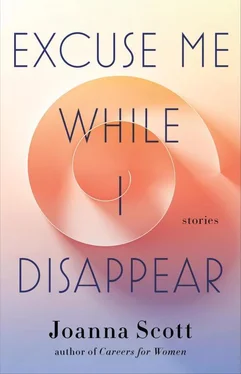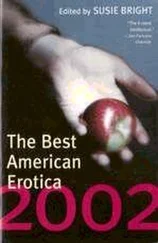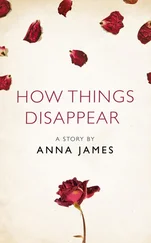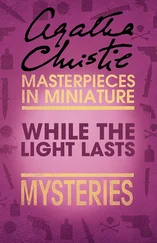On the train home that day in 1965, I didn’t bother to impress upon Jody the magnitude of her crime. I resolved to keep it a secret for the child’s sake, and for the sake of her beleaguered parents. On a subsequent visit to the Cloisters the following month, I discreetly returned to the gallery to check on the painting, but it had been removed from the wall and replaced with a coat of arms. As far as I know, the painting of the weeping woman was never exhibited again.
Jody, meanwhile, would continue to be driven by an insatiable desire to relieve other people of the burden of their sorrows. To the end of her life, her inability to tolerate sadness was as much a fixed trait as the color of her hair, and it accounted for both her cheerful, loving spirit and an impulsiveness she never fully learned to restrain.
Let me, though, take full responsibility for the damaged painting. I was the one who brought Jody to the Cloisters, and I was the one who lost track of her. I chose to protect her with my silence. Only in her absence, after we buried her next to her mother, was I ready to make a full confession. And so, last month, I put my testimony in a letter addressed to the director of the museum, and then I sat back and waited for my punishment.
You can imagine my surprise when I received no reply. I had confessed to covering up an act of outrageous vandalism; I was ready to endure the consequences. At the very least, I expected that the museum would demand compensation for the damaged painting. Perhaps my letter had never reached the director. I picked up the phone and called his office. I told my story to an assistant, who, after hearing me out, put me on hold while she checked the catalogue. Back on the line, she reported the museum had no listing of any work of art in their collection that matched the painting I described.
“Ma’am, you must be mistaken,” she blithely insisted.
I asked to speak to her boss. Oddly, the assistant put me through to the Department of External Affairs. What did my story have to do with External Affairs? They wondered the same thing and put me on hold. I was referred from one staff member to another, until I reached someone in a curatorial department, who confirmed once and for all that the painting I described had never existed.
“Really!” I couldn’t contain my irritation. “Do you think I just made up this whole story? How about I put it in print and we let the public decide?”
Which brings me to my current predicament. Unable to verify this story but determined to publish it, I have been instructed by legal experts to pretend that any resemblance to real persons is entirely coincidental. Gone is the truth, along with that dried-up drop of paint. Believe what you will. I’ll just say that it is not the first time a museum has lost track of an item in its collection. Maybe the damaged painting was destroyed, or it was stolen, or it was discreetly used to repay a debt. My guess is that in one of the unused bedrooms of some mansion hidden at the end of a long, gated drive is a portrait of a weeping woman who sheds no tears.
It was a damp November afternoon in Paris in 1887 when the man who would be identified in the book only as “C” suffered the first symptoms of the affliction that would make him noteworthy. He had risen from his nap and settled comfortably into his armchair by the window overlooking the Place des Vosges. Droplets from the thick fog ran like tears down the exterior of the glass. A wood fire crackled and filled the room with its soothing fragrance. [1] I came across the story of C when I was browsing at a used bookstore in Ithaca. I read the case history while standing in the aisle. Stupidly, I left without purchasing the book. When I returned for it later, the book was gone. I don’t recall the title. C’s story, however, left an indelible impression in my mind.
Long married but with no heirs, recently retired from a position as director of a champagne export business, C did not lack for friends. He and his wife dined out most evenings, and he was an active member of the Société de Géographie. But C also guarded his solitude and spent most of his afternoons alone in his library. He was well-educated and fluent in several languages. He longed to author something of his own but didn’t know how to begin. He was secretly critical of contemporary men of letters and blamed novelists, especially, for pandering to the public and emptying their work of useful information. The worst of them, in his opinion, was Victor Hugo, who used to live in an apartment across the square. C had read a couple of novels and a book of verse by his former neighbor. He wasn’t inclined to read more. He wasn’t at all curious. What was there to be curious about if there was nothing to learn? He had read enough to reach the verdict that the whole of Hugo’s oeuvre was overrated.
In general, he preferred reading biographies and military histories. On this particular day in 1887, we find him reading a volume he had purchased for a few francs from a bookseller near the Pont Marie. It was an English edition about the Crusades, and C was reading with interest about the disorder in the ranks of the early Christian pilgrims. [2] The book C was reading consisted of late chapters extracted from Edward Gibbon’s classic work and republished in a pocket edition titled simply The Crusades . I have checked the quotes for accuracy.
“The vulgar, both the great and small, were taught to believe every wonder, of lands flowing with milk and honey,” he read.
“Their ignorance of the country, or war, and of discipline exposed them to every snare,” he read.
“A pyramid of bones informed their companions of the place of their defeat,” he read, and he continued to read the sentence stating that “three hundred thousand had already perished before a single city was rescued from the—”
And then he stopped, or was stopped, as if he had run with his eyes closed into a brick wall. His eyes were wide open, but he couldn’t read the word that followed in the sentence. The word was infidels. It should have been a familiar word to C even if he hadn’t been entirely fluent in English, since it was nearly identical in French: infidèles. He knew the word in English just as he knew it in French. He knew it in Latin and Spanish. Really, it should have been easy enough for C to comprehend. Yet, to his dismay, the word was utterly unintelligible. His eyes processed the letters in their correct order. His brain received the information in the usual fashion. He inhaled, and his oxygenated blood flowed briskly. All organs were seemingly in working order, and C was very much awake, utterly sober and self-aware, but the eight letters of that English word were as devoid of meaning as if he had never learned to read.
It’s true that many of us have experienced the odd momentary sensation when a simple word is suddenly unrecognizable. Scientists call this phenomenon “semantic satiation” and explain it as a result of overuse of a specific neural pattern. They hypothesize that intense repetition of a specific word creates a reactive inhibition, slowing the neural activity associated with the meaning of that word. We can read the word want, for instance, without difficulty. But reading it over and over interferes with comprehension: want want want want want want want want want want want want want want want want . [3] One study has gone so far as to suggest that the recent dramatic uptick in this phenomenon is due to the simplification of writing necessitated by mobile devices. Smaller screens demand a smaller vocabulary, increasing both our exposure to a smaller number of words and the concurrent increase in semantic satiation. See T. Leonardo, S. Pissoralüpa, and J. M. Merendeskewski, “Neurosemantic Frequency Patterning in ERP DHA Measured Outcomes,” Journal of Neuromorphological Studies 1752, nos. 2–3 (2018): 132–45.
Читать дальше












